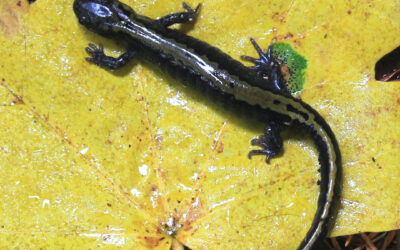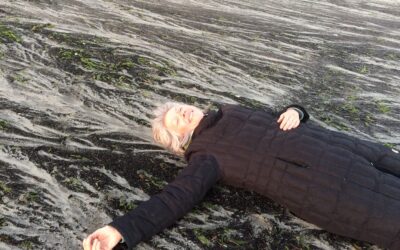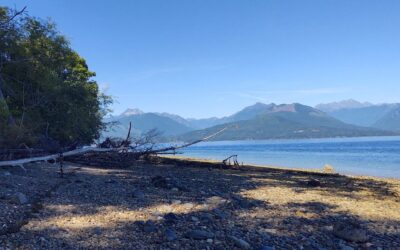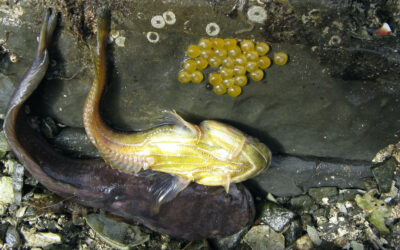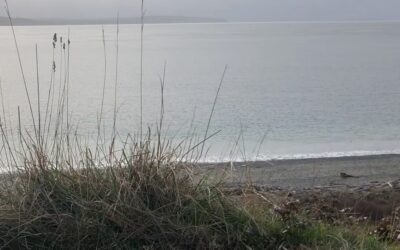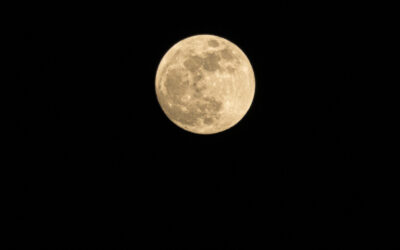HOW MANY TIMES DOES A SWAINSON'S THRUSH SING IN ONE DAY?
I Decided to Find Outby John Neville, Autumn 2023

Swainson’s Thrush. photo by Janine Schutt
HOW MANY TIMES DOES A SWAINSON'S THRUSH SING IN ONE DAY?
I Decided to Find Out
by John Neville
Autumn 2023
COVID-19 kept me at home in the 2020 springtime so I was able to enjoy the birds in my own backyard on Salt Spring Island, BC. On May 9 I first heard the “whit” calls of a Swainson’s Thrush (Catharus ustulatus). The next day he tried out a few songs, then went quiet until May 17. Since then his lovely, flute-like, upwardly spiraling songs have graced my yard every day!
Swainson's Thrush
I don’t know when the female arrived, but they have chosen a thicket across the road from my gate to sing, call, and nest. It consists of alder and cedar, with a thick tangle of blackberry and ivy. The high tide line is about 5 m down a bank. He usually sings constantly from the thicket, with traffic passing about 2 m in front of him. Our yard, and the roadway north to the letter box, is a little less than a hectare. Both birds visit all around this territory, singing or calling, but no further. Another Swainson’s Thrush can be heard just to the south and their territories abut. To the north, the next Swainson’s Thrush is about 0.5 km away. If I walk down the drive (straight towards him) he stops singing and sometimes gives sharp “whit” alarm call. When I, or other people, walk along the road past him, he usually continues to sing. His song is easy to hear throughout his territory and acts like a vocal fence. I’ve only heard one angry exchange of calls and songs with the bird on the south side when they met at their boundary. The birds are easy to hear, but hard to see, hiding in thickets and shady places to nest, feed, and vocalize. They are quite common all across the continent in the Boreal Forest and other woodland places south into the U.S.

Juvenile Swainson’s Thrush. photo by Janine Schutt
Our bird is a subspecies of Swainson’s Thrush called the Russet-backed Thrush, located in the Pacific region. Its back is a rufous colour and it has brownish spots on the throat and chest. In other parts of the continent, Swainson’s Thrushes may have a grayish back or be olive-backed in colour.
These birds are secretive, spending most of the time in shady areas. They eat beetles, caterpillars, ants, flies, grasshoppers, and a variety of berries. The female was foraging in a thicket at the back of our property on May 22 and revealed herself by her “whit” and “whit-purr” calls. She allowed me to stay only 2 m away and continued to call for several minutes. I only knew that it was the female because her partner was still singing down by the water.
The beautiful ascending, flute-like song seemed to occur effortlessly all through the day. I recalled Louise de Kiriline Lawrence’s count of a Red-eyed Vireo’s song many years ago and wondered if I had the mental fortitude to count the Swainson’s Thrush’s song. So at 0400 on May 24 I sat down outside of our kitchen door about 25 m from the waterfront thicket. Dawn was officially at 0520. However, the slightest hint of light in the sky seems to trigger birdsong. The male Swainson’s Thrush gave two “whit” calls and began to sing at 0430. The female gave some accompanying “whit-purr” calls. She was followed 5 minutes later by a Song Sparrow and 15 minutes later by a Robin. There were 255 songs in the first 30 minutes.
Dawn is the time when he is most anxious to defend his territory, and in the 0500 hour he sang 473 songs. He has moved several times to the north and south, but 90% of the time he stayed in the thicket. He was just a little slower in the 0600 hour with 374 songs. It began to rain in the 0700 hour. He took an 11-minute break but continued to sing while five cars and a boat passed. Very noisy young House Finches and Starlings also made counting difficult but the total was still 299.
He continued to become more assured of his territory with 239 songs in the 0800 hour. His rate increased slightly in the 0900 hour with 344 songs. In the 1000 hour, a very noisy coastguard hydrofoil went by causing the bird to increase his volume a little. A passing jogger made him change briefly to sharp warning “whit” call. He took a ten-minute break and still sang 246 phrases. His rhythm did not change for passing Canada Geese, Osprey, Belted Kingfisher, or a Bald Eagle imitation by a starling.

Spectrogram capture of one uprising song note of a Swainson’s Thrush.
There were only 146 songs in the 1100 hour, but there seemed to be communication between the pair. The male gave several soft “whit” calls between songs and the female responded with a more melodic “wheet” call. The male continued to sing but added several “wheet” responses between songs.
The number of songs really slowed down in the afternoon:
1200 hour — 107
1300 hour — 120
1400 hour — 191
1500 hour — 79
1600 hour — 18
1700 hour — 47
1800 hour — 44
I was relieved in the 1900 hour that the pace picked up again to 251. My concentration had been slipping during the slow afternoon.
The 2000 hour was even better — he sang 430 times, almost as fast as the 0500 hour! 2100 was officially twilight time. The bird sang another 104 times until 2125. During the last sequence the female added four or five “whit-purr” calls, before the pair settled down for the night in their thicket. After 3,707 lovely Swainson’s Thrush songs, I was also ready for bed.

John Neville is a Birds Canada member and a participant in the BC Coastal Waterbird Survey and BC/Yukon Nocturnal Owl Survey. He has been creating a professional quality catalogue of wildlife audio recordings since 1993. Neville Recording has produced over 15 productions featuring regional bird sounds across Canada suitable for beginners and experts alike. His most comprehensive work is Bird Songs of Canada, a four- volume collection with 396 tracks featuring 435 species. Visit Neville Recording at http://nevillerecording.com/nr_catalogue.html to find a complete list of his work.
Table of Contents, Issue #21, Autumn 2023
Silent By Nature
by Tom Doty, Autumn 2023 Long-toed salamander. photo by Tom Dotyby Tom Doty Autumn 2023Harbingers of spring, amphibians in Kitsap County include both frogs and salamanders. The iconic body form and vocalizations of frogs are familiar, but less well known are their...
Listen To Salish Sea
by Gordon Hempton, Autumn 2023 photos and audio by Gordon Hempton except as noted by Gordon Hempton photos and audio by Gordon Hempton except as noted Autumn 2023Clap your hands, drop a pencil, set down a coffee mug — each event makes a sound — a different sound. Our...
Sound Mapping Nature
by Micaela Petrini, Autumn 2023 Misery Point, Kitsap Peninsula. photo by Micaela Petriniby Micaela Petrini Autumn 2023Do you ever spend time outside with the intent of listening? Closing your eyes, opening your ears, and taking in all of the sounds around you? This...
Singing Bullhead
by Andy Lamb, Autumn 2023 A small, recently deposited clutch of eggs with a pair of plainfin midshipman fish. One is overturned, showing its distinctive underside. photo by Linda Schroederby Andy Lamb Autumn 2023Perhaps the most colourful family...
Atmosphere
Poem and video by Renee Gastineau Autumn, 2023Atmosphere Wind and watertogether and apartcrash and crackle to sooth restless thoughts.Today and tomorrowtogether and apartconnect with the wind and waves to saymove along, take a ride, enjoy the journey, embrace the flow...
Poetry-21
Photos by John F. Williams Autumn 2023 Photos by John F. Williams Autumn, 2023Blue Skies by Nancy Taylor birds have muchto say todayeach on a different noteyet in harmony pausingwhen wind whips upto listen, to defend,or tend hatchlings no alarmingdeesfrom...
PLEASE HELP SUPPORT
SALISH MAGAZINE
DONATE
Salish Magazine contains no advertising and is free. Your donation is one big way you can help us inspire people with stories about things that they can see outdoors in our Salish Sea region.
We also don't advertise Salish Magazine, so please spread the word of this online resource to your friends and colleagues.
Thanks so much for your interest and your support.
We also don't advertise Salish Magazine, so please spread the word of this online resource to your friends and colleagues.
Thanks so much for your interest and your support.


